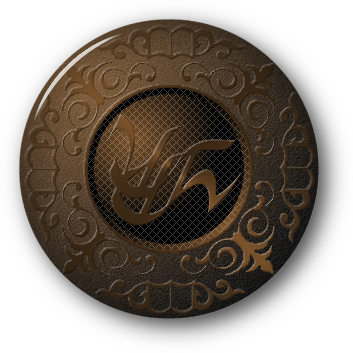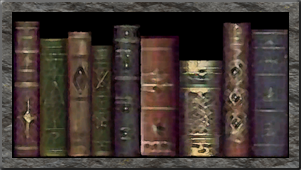

|
|
When a D'ni master of the Art of Writing practiced his or her craft, they were not creating a world out of nothing. Instead, the book was used to describe the result desired by the writer. If the book was well-written, it would form a link to one of the seemingly infinite worlds that existed across dimensions of space and would lock onto one that closely matched the description in the book. The Ronay, and later the D'ni, called the alternate dimensions the Great Tree of Possibilities. The places they created by means of the Art were called Ages. It's interesting to note that the term "Age" seems to refer to the segment of the world that has been written in a descriptive book, not necessarily the entire world of which it is part. This is true of the Age of D'ni, which refers to the caverns Ri'neref envisioned. They referred to the rest of the Earth as "riltagamin", which means "unknown" in the D'ni language. Once the descriptive book locked onto a world, it would twist part of it enough to make what the writer had written come true as closely as it could, depending on what it had to work with natively. That could lead to problems, both minor or severe. When Gehn wrote worlds, his books could destabilized entire planets. In particular, this happened to a world he called Riven, and resulted in it becoming uninhabitable, even though it had a native human civilization prior to his intervention. Early in Atrus' experiments in writing, he created an Age he named Stoneship because he'd intended to write a sailing ship into it to explore with, and ended up with his ship split in half and attached to a stone spire he hadn't accounted for with his words. Atrus ended up being surprised when some native boys named Emmit, Branch and Will discovered him there. When he wrote the Age and began to explore it, he had no idea that there were people already living there. The D'ni were well aware of the dangers inherent in writing new Ages, and had strict guidelines for how they were to be written and tested. The Guild of Maintainers, which was part sheriff's department and part environmental engineering team, had among their responsibilities the task of exploring and evaluating newly written Ages to determine their stability and safety before others were allowed to use them. No Age could be released for public or private use without a stamp of Maintainer approval. A side effect of the warping of reality involved in writing Ages was that there was no way to know ahead of time whether or not a book was latching onto a world that already had an indigenous population. The Ronay had laws that Ages with native peoples were to be left alone, unless it was deemed beneficial to both sides for diplomatic contact to be made. Unfortunately, this law was often broken, especially since after the destruction of Garternay, the people of Terahnee and some factions of D'ni came to believe that the Art actually created new worlds, rather than merely tapping into existing ones. The Terahnee eventually came to believe that people of Ronay descent were a superior race akin to gods, who could create life. They called the native peoples of the Ages they wrote "bahro", meaning "beast people", and saw them as fit only to be slaves for their society. Ages were written for many purposes. Some were created for food production, some were industrial, some were made as prisons to isolate the inmates from D'ni without actually restricting their ability to live a relatively normal life. Others were made for purely recreational purposes, such as the various garden Ages. Around 8100 DE (AD 444), there was a "garden craze" and a large number of garden Ages were written for public use, including the Ages of Eder Tsogal, Eder Delin, Eder Gira and Eder Kemo. Other garden Ages were written for private owners, such as the infamous garden written by decree of King Shomat. The two types of books written in the Art were: Descriptive books: These were the primary book written about the Ages, which contained all of the information needed to create the result that the author wished for, and which formed the connection to the Age. The book held a picture on its first page that came to life when a successful connection was made to a receptive world. By touching the picture, you could link to the Age described by the book. These pictures are called linking panels. It's worth knowing that a descriptive book could be altered after it was finished, but it took a great deal of skill and attention to detail. Failure to know exactly what existed in the Age down to the last detail could result in the link switching to a different Age entirely, losing access to the original Age forever. Both Ronay and D'ni law forbid the alteration of descriptive books generally. Linking books: These were books that were much less complicated. They were made to form a remote connection to the descriptive books and create a link to the Age pictured on their first page. Linking books were given to their recipients for actual use, while the descriptive books were generally locked away somewhere safe. Unlike descriptive books, linking books could have many linking panels, one on every other page, although the panels had to be different locations in the same Age. The other advantage to linking books was that many copies could be made, whereas only one descriptive book could exist. It is notable that there seem to be two kinds of linking book. One has linking panels that are dynamic—that is, the image in the panel moves—and the other has static, unmoving panels. No one has yet been able to account for why either type might appear in a given book. As examples, the linking books in the cavern seem to all be of the static variety, while books written by Atrus and the Direbo books found in the Great Shaft have dynamic panels. The only thing that can be stated with any certainty is that no book with a dynamic linking panel has been known to have more than one linking page. There are several known books with static panels that have more than one linking page. Yeesha, who was a gifted Writer, created an additional feature for her Relto linking books. Relto could have pages added to it that brought new features to the Age. This broke many rules that D'ni Writers thought inviolable. |
Myst, the Myst logo, and all games and books in the Myst series are registered trademarks and copyrights of Cyan Worlds, Inc. Myst Online: Uru Live is the sole property of Cyan Worlds Inc. The concepts, settings, characters, art, and situations of the Myst series of games and books are copyright Cyan Worlds, Inc. with all rights reserved. I make no claims to any such rights or to the intellectual properties of Cyan Worlds; nor do I intend to profit financially from their work. This web site is a fan work, and is meant solely for the amusement of myself and other fans of the Myst series of games and books. |
